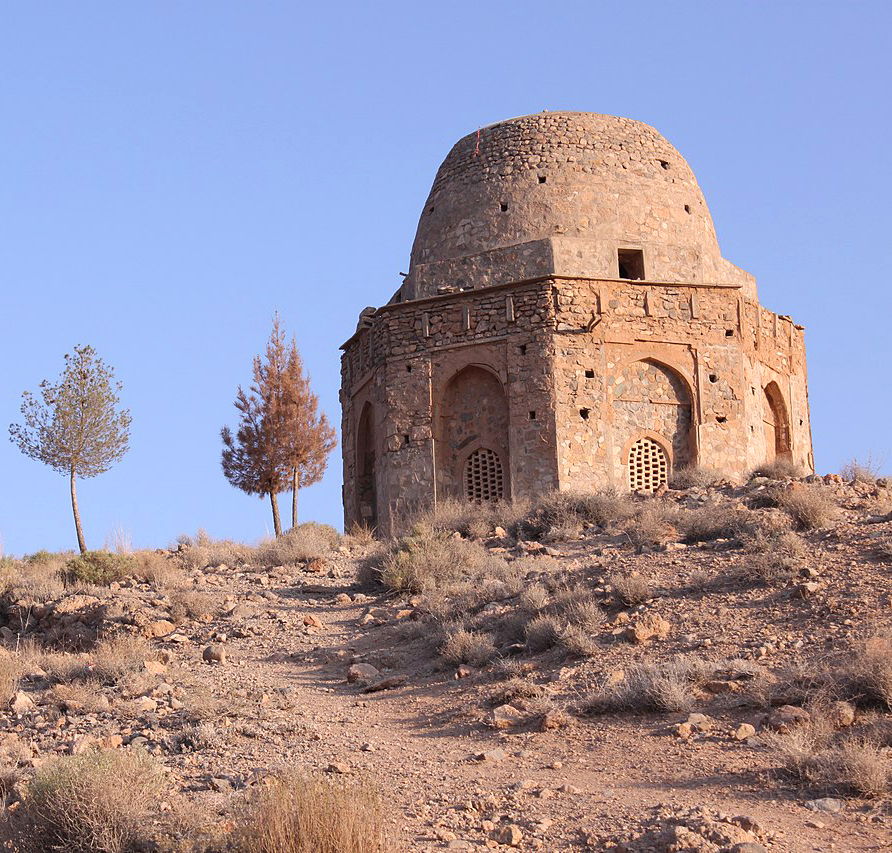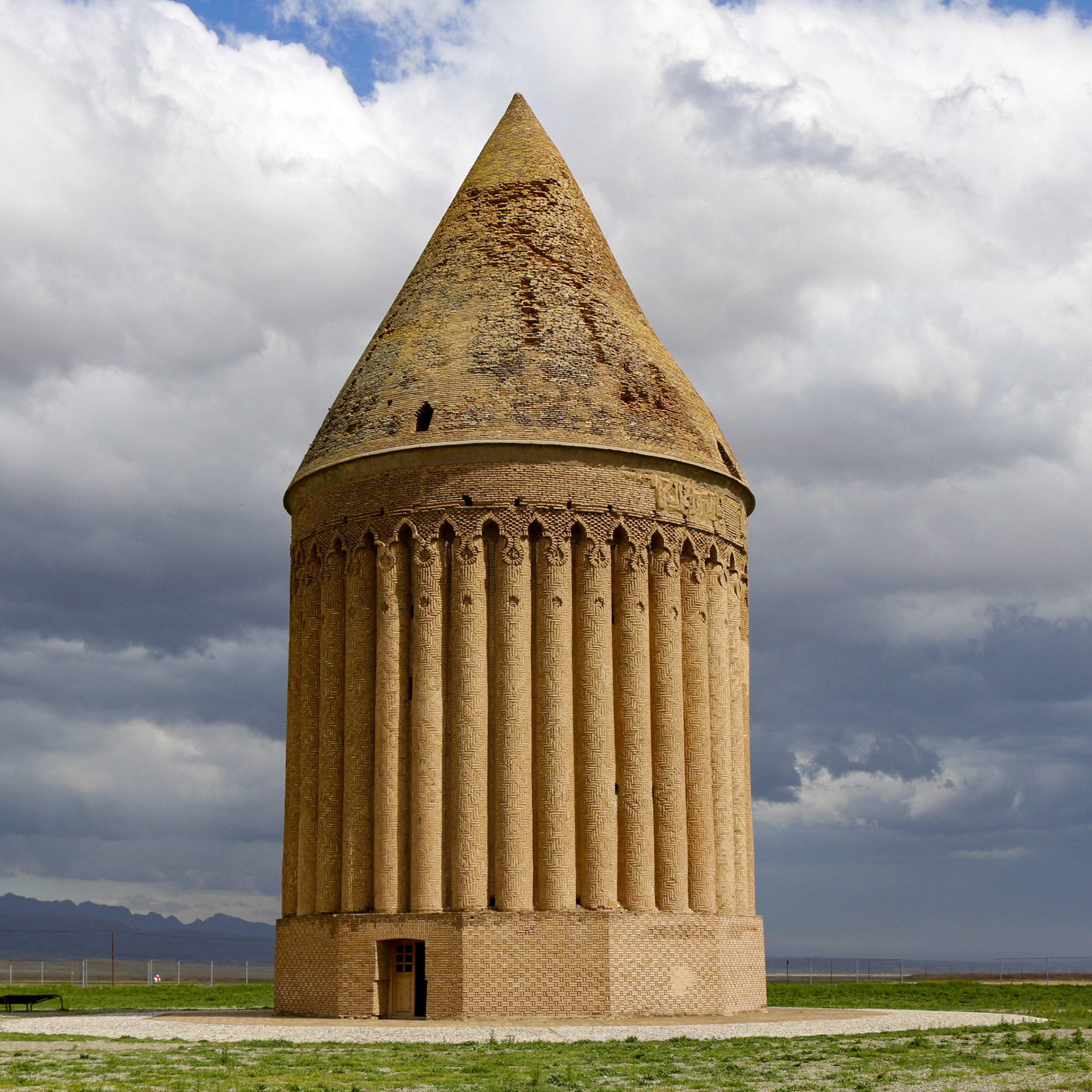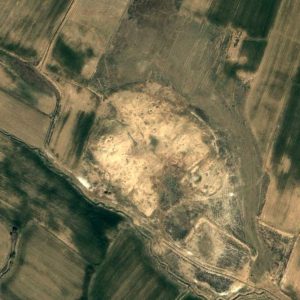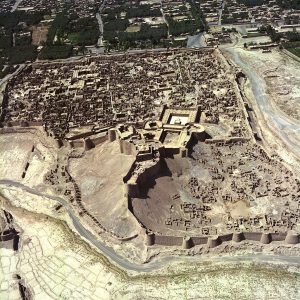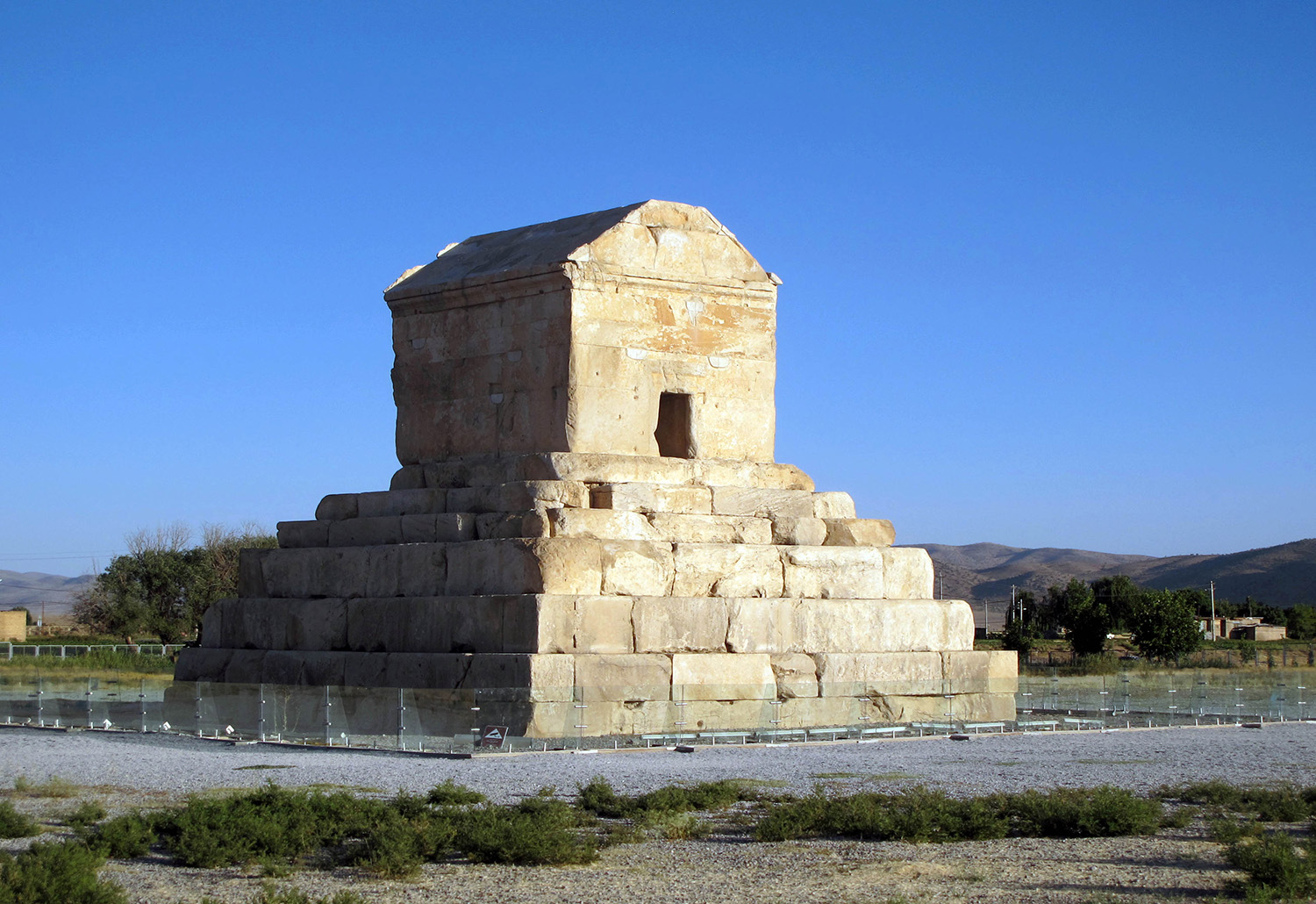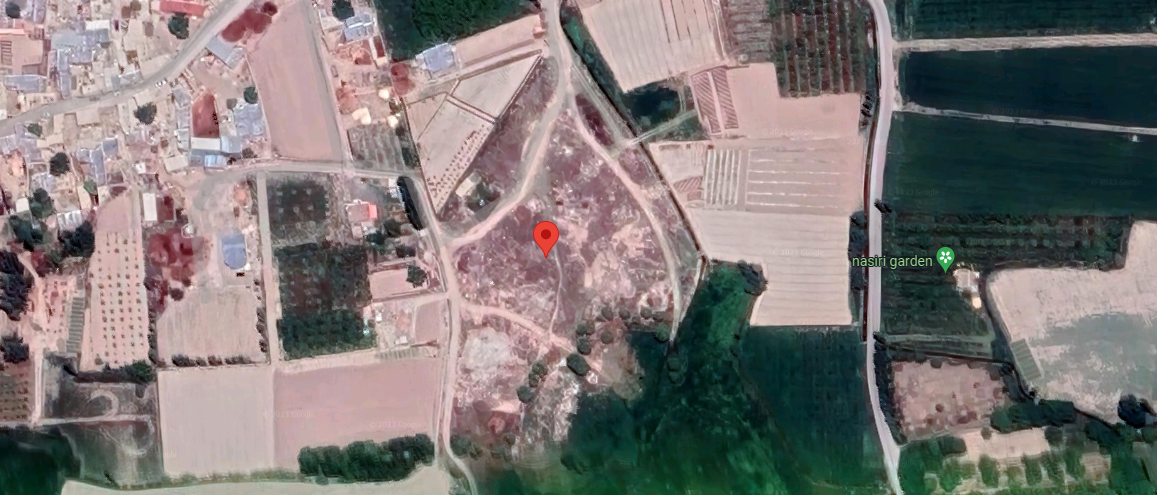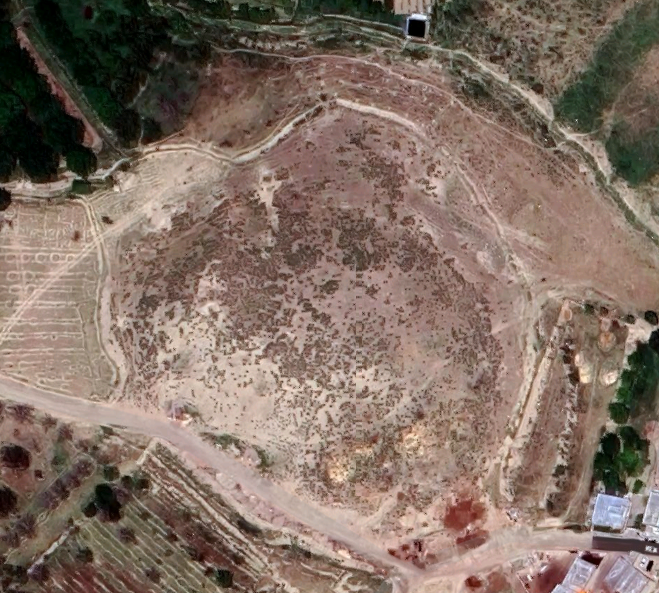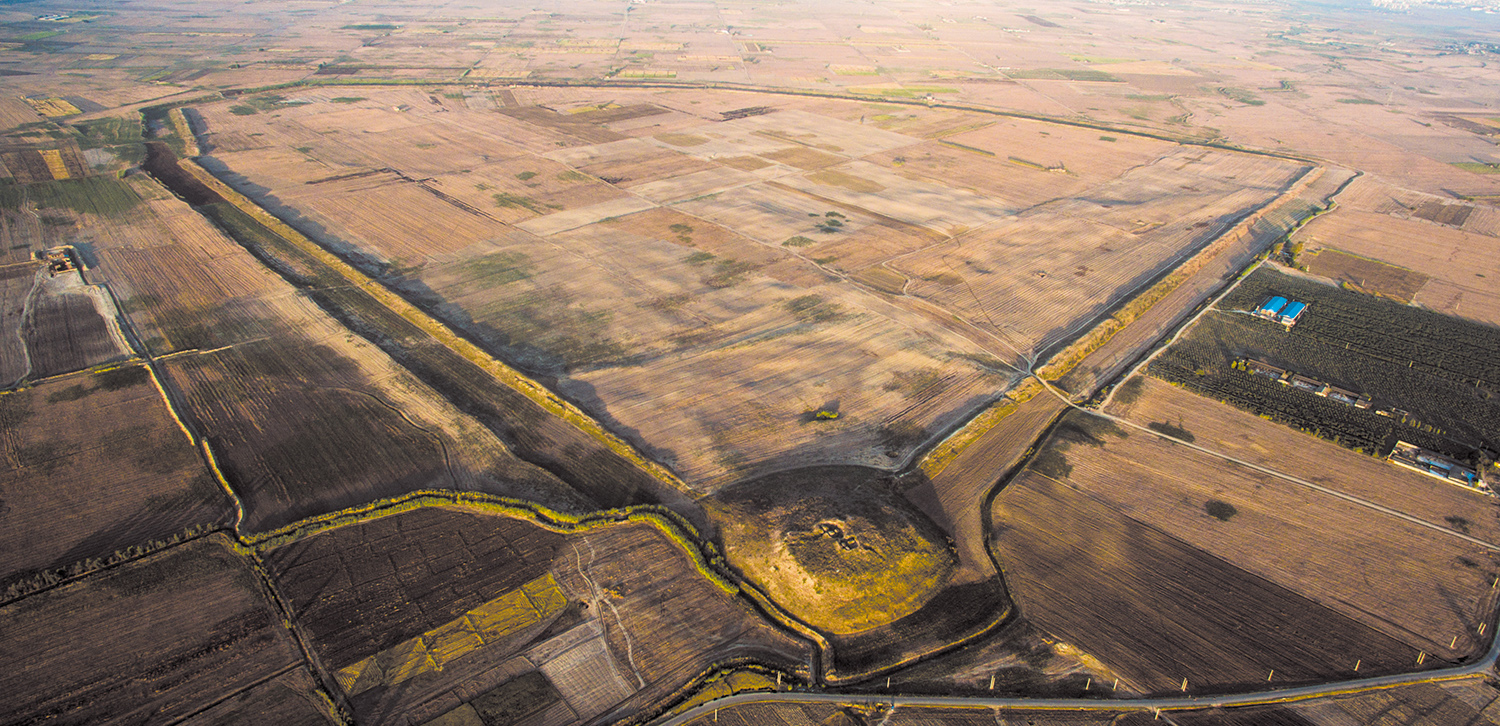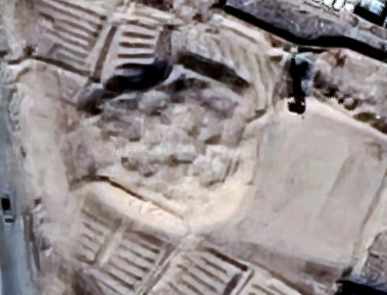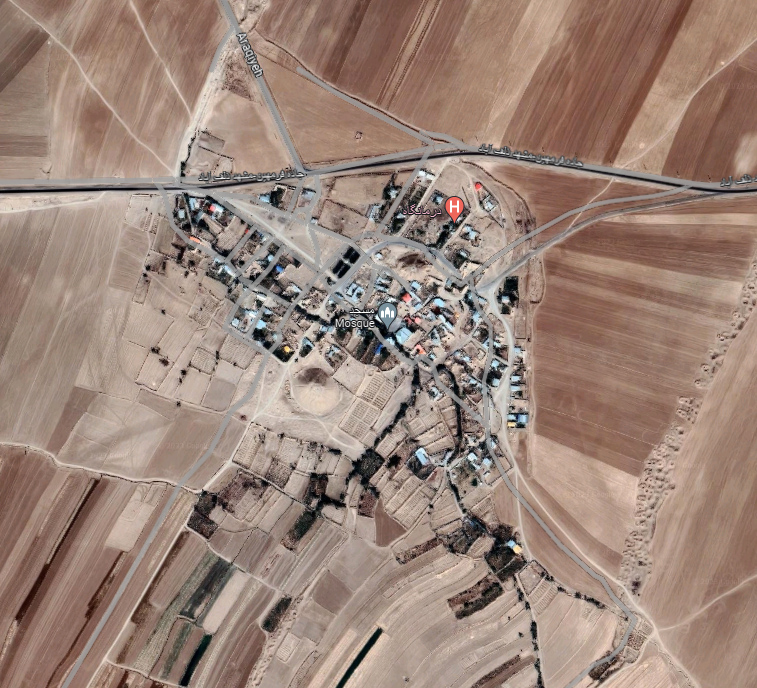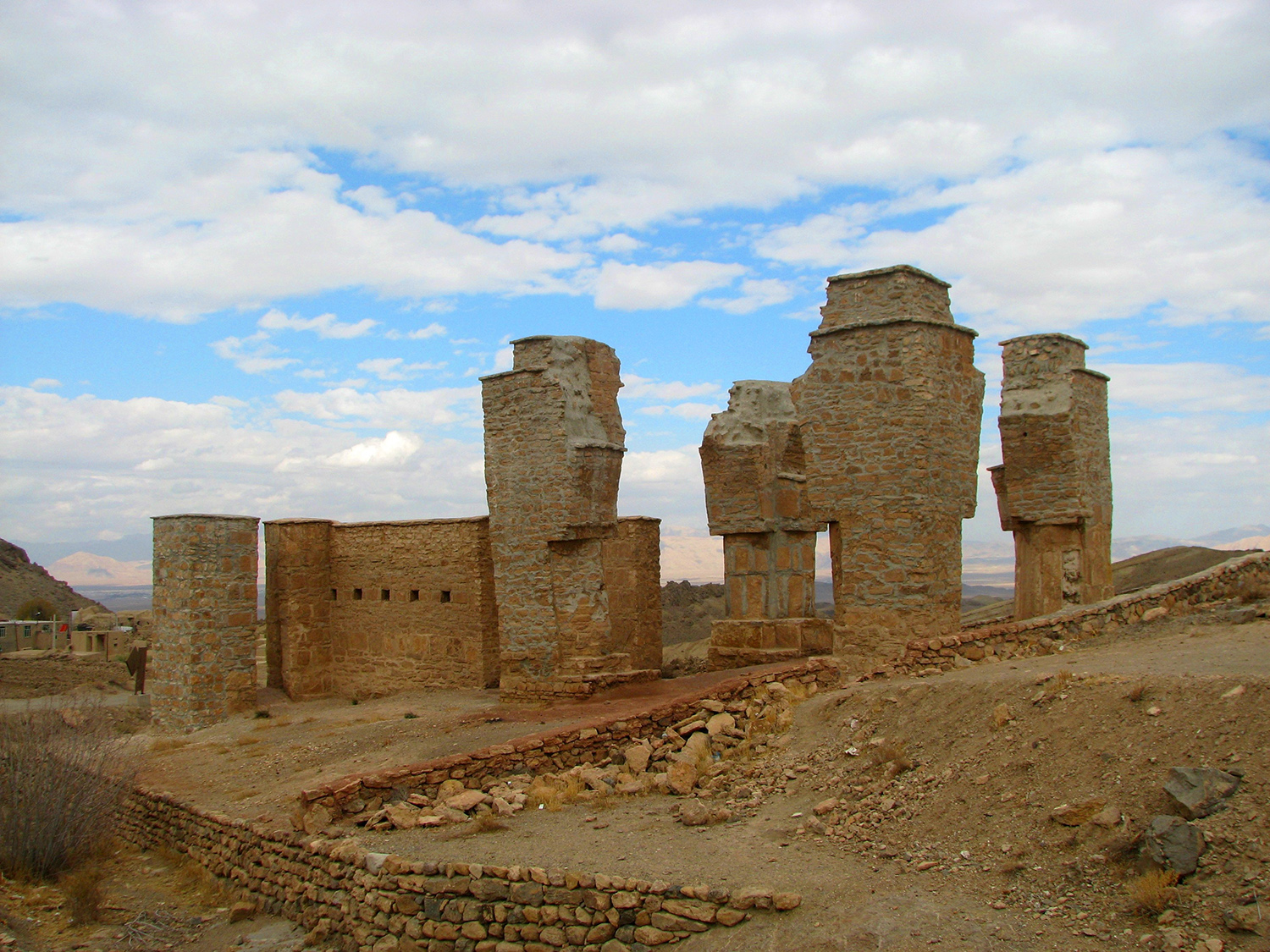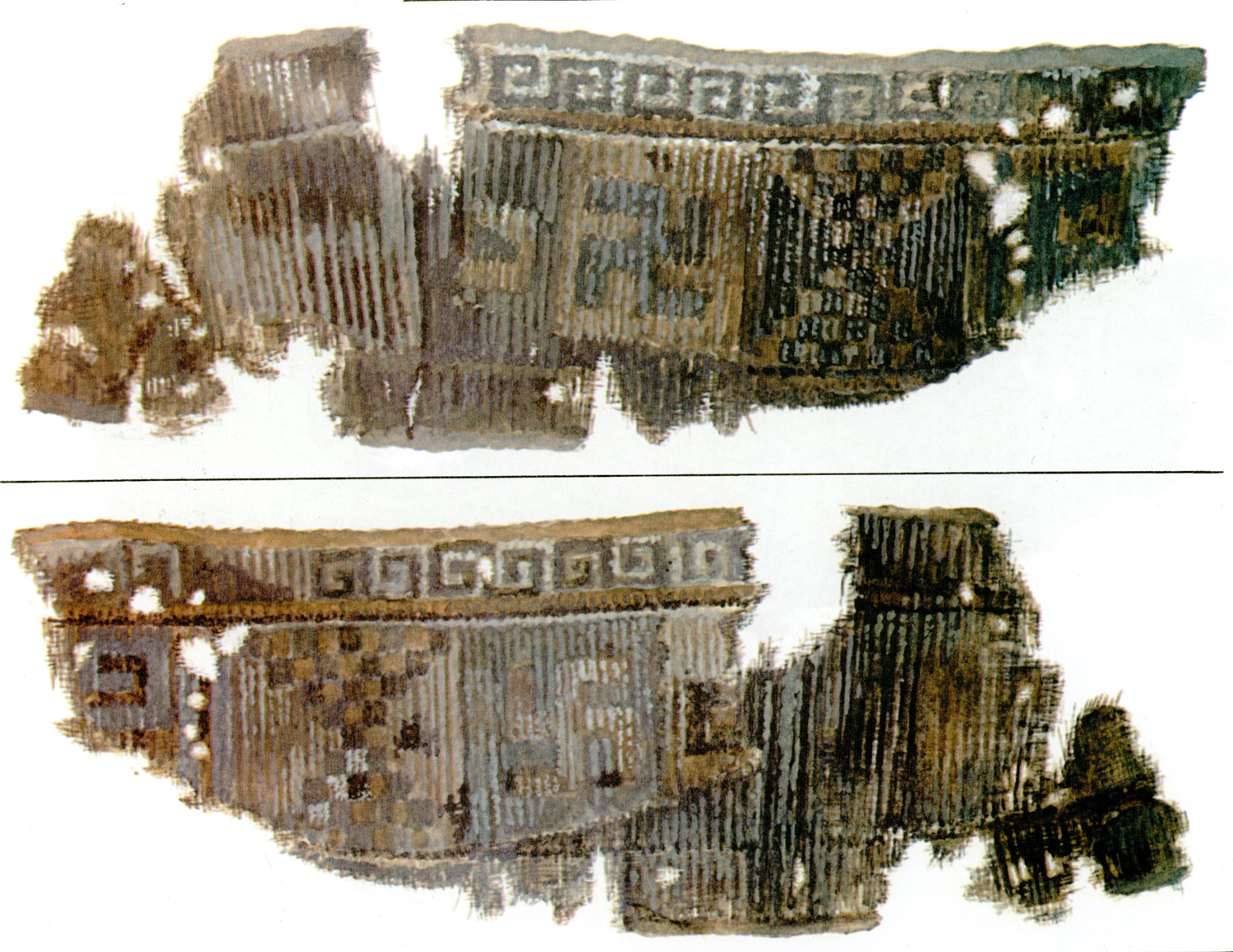Takht-e Belqeysتخت بلقیس
Location: Takht-e Belqesy is located 7.5 km northeast of Takht-e Sōleymān, in northwestern Iran, Zanjan Province.
36°39’50.0″N 47°18’01.0″E
Map
Historical Period
Sasanian, Islamic
History and description
The Belqeys Mountain, with its two closely located summits, is 3300 meters high and situated 7.5 km northeast of Takht-e Sōleymān (fig. 1). On the highest part of this mountain, there are remains of fortifications dating back to the Sassanian period. They have a close architectural and historical relationship with the monuments of Takht-e Soleyman.
The fortress is enclosed in an area of approximately 60 x 50 m. The fortifications (fig. 2) follow the slopes of the mountain, roughly taking the form of a square, with slight curves on its northern and western sides (fig. 3). The fortress’s gate is on the south wall. Inside the walled fortress are two distinct constructions: the citadel and the auxiliary rooms. The citadel is a square-shaped hall with an eyvān on its southwestern side (fig. 4). The fortress' gate may have been on the southeastern side or close to the southern angle. There is a square-shaped hall inside the enclosing walls provided with an eyvān on its southwestern side. Facing the citadel stands a multi-tiered terrace with vaulted shelter-like chambers. The construction techniques such as rubble masonry and dimensions of bricks strongly suggest a date in the late Sasanian/early Islamic period. As for Takht-e Belqeys’ function, it has been suggested that it served a dual function: as a watch tower overlooking the fire temple at Takht-e Sōleymān and as a small hunting palace. Wild boars and deer were abundant in the area until a recent time.

Fig. 1. View of the Belqeys Mountain from Takht-e Soleyman (image: A. Mousavi)

Fig. 2. Dietrich Huff’s topographic plan of the Belqeys fortress (image: D. Huff, “Tacht-e Belqis,” pl. 196)

Fig. 3. The surviving southwestern wall of the fortress and its bastion in 1970 (image: M. Mousavi)

Fig. 4. The southwestern wall and its bastion in 2003 (image: A. Mousavi)
Archaeological Exploration
The ruins of Takht-e Belqeys were first inspected in 1959 by Hans Henning von der Osten and Rudolf Naumann while excavating at Takht-e Sōleymān on behalf of the German Archaeological Institute. The fortifications were later the object of careful investigation by Dietrich Huff in 1966 and 1969. Takht-e Belqyes’ distant setting, necessitating a three-hour hike, and its high altitude have deterred any further archaeological exploration.
Bibliography
Huff, D., “Sasanidische-Frühislamiche Ruinenplätze im Belqis-Massiv in Azerbaijan,” Archaeologische Mitteilungen aus Iran, vol. 7, 1974, pp. 203-213, pls. 42-45.
Huff, D., “Tacht-e Belqis,“ Archäologischer Anzeiger, 1975, pp. 196-204.
Naumann, R., Die Ruinen von Tach-e Suleiman und Zendan-e Suleiman und Umgebung, Berlin, 1977, pp. 116-119 (for Takht-e Belqeys).
Author: Ali Mousavi, December 23, 2023
Originally published: March 16, 2024
Last updated: September 18, 2024








